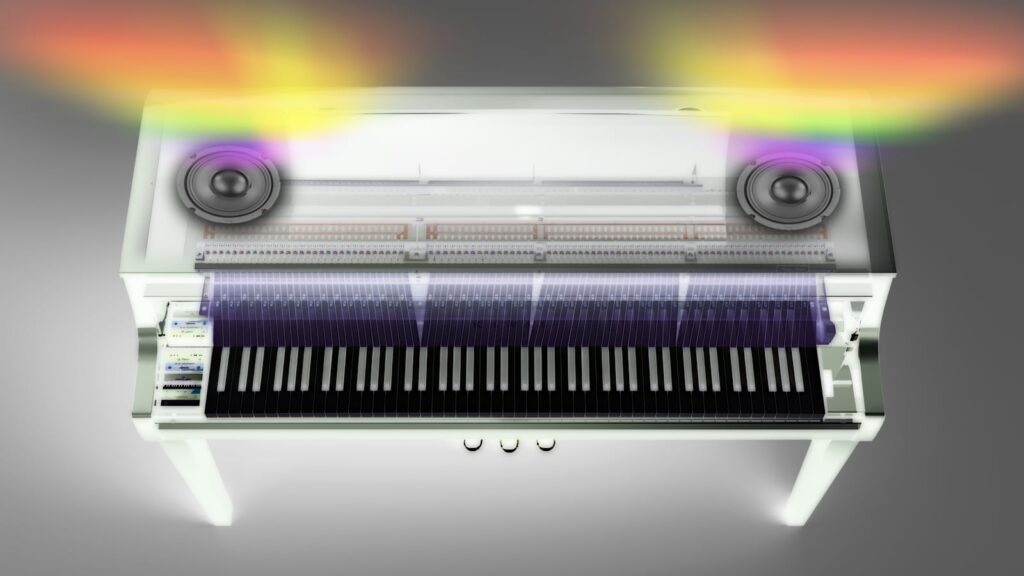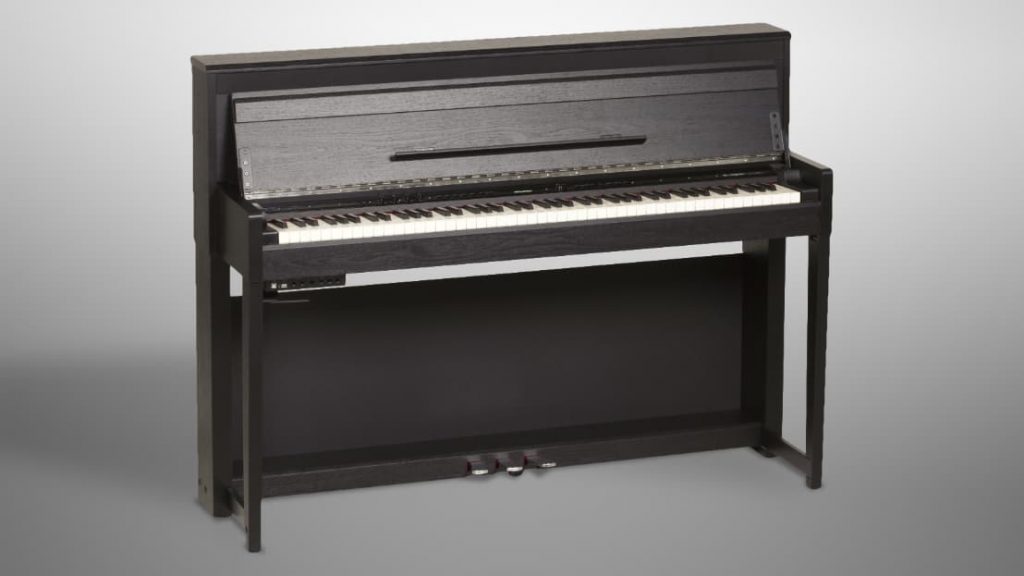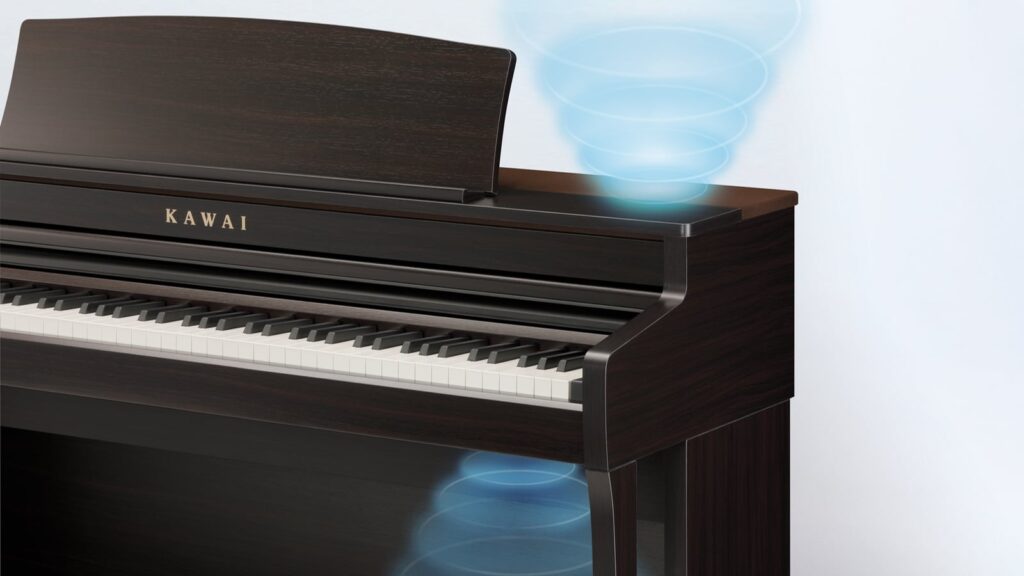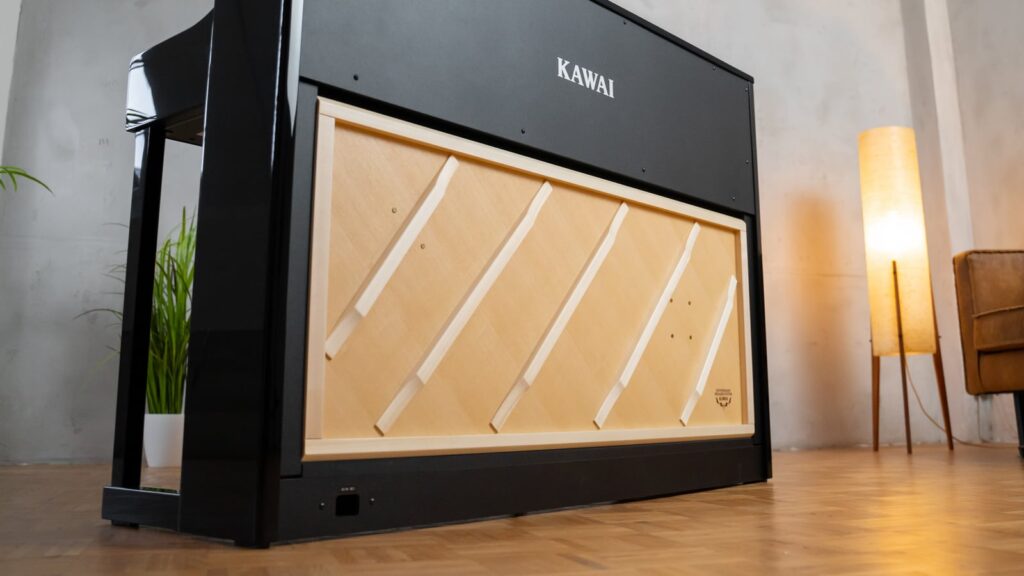What’s the Difference Between Speakers and Piano Sound?
Acoustic pianos are designed to fill a room with natural resonance. In the typical wall-mounted position, an upright piano projects sound in all directions through its body and soundboard. Opening the lid allows for greater sound projection, while removing the two-part front panel makes the sound even more open and direct.
This effect is even more pronounced on a grand piano. When the lid is raised, the instrument can fill an entire concert hall with sound. It should be clear that a compact, entry-level digital piano priced at $1,000 or less cannot achieve this level of acoustic presence. Nevertheless, many players still expect a full “concert sound” in their living room.
Headphones vs. Speakers
In a way, digital pianos can reproduce the rich sound of a grand piano—when played through headphones. The stored piano samples sound like a classical recording, with concert hall reverb simulated through digital effects. More importantly, listening through headphones isolates the sound from any external acoustic influences. This highlights an essential point: You must consider not only the speakers and the piano sound itself, but also(!) the surrounding acoustic environment.





